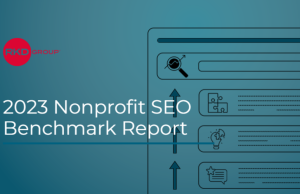Nearly every excelling nonprofit grows on the foundation of innovative idealism. However, the other integral aspect to these organizations’ successes is the careful planning that goes into the idea-implementation process.
Where many nonprofit managers fail is when these new ideas are presented and implemented without undergoing rigorous functional testing. At best, this results in wasted time, energy, and resources. In turn, it demoralizes organizational workforces. This negligence –specifically within international nonprofit communities — can do tremendous harm to the local people being served.
Here are five tips on how you can improve this process in practical and effective ways.
1: Accurately Form Assessments – Steer Clear Of These Traps
The initial step is potentially the most crucial. You must first carefully assess to know with what you are working. To successfully accomplish this, it is necessary we avoid the following bias-pitfalls:
- Combatting The Long-Distance Trap: It is crucial that you are in-person to assess needs, rather than evaluating from afar.
- Bypassing The Myopia Trap: Instead of jumping to solutions based on past similar situations, you should accurately look at new situations with a fresh and thorough lens, accounting for all nuances.
- Don’t Fall Into The Culture Trap: Rather than trying to solve the problems of an entirely different culture with methods you culturally deem best, work toward helping in sustainable ways that are more culturally sensitive and considerate of all local stakeholders, such as maximizing local food purchases and improving farming techniques.
- Steer Clear Of The Amateur Trap: You must educate yourself regarding the communities where you will serve instead of relying on amateur generalizations of cultural needs based on past short-term service experiences.
2: Prioritize Specific Programs
Next in the importance of choosing a functional program, it is essential you determine which needs intersect your skillset and budget, and confirm you have the resources to complete the program. According to Jocko Willink and Leif Babin, in their book, Extreme Ownership: How U.S. Navy SEALs Lead and Win, to ensure you prioritize and execute a well-implemented plan, you can do the following:
* Evaluate the highest priority problem.
* Relay in simple, clear, and concise terms the highest priority effort.
* Develop and determine a solution, and seek input from key leaders and the team.
* Direct the solution execution; focus all efforts and resources toward this priority task.
* Move on to the next highest priority problem. Repeat.
* When priorities shift, pass situational awareness both up and down the chain.
* Don’t let the focus on one priority cause target fixation; maintain the ability to see other problems developing and rapidly shift as needed.
3: Plan Properly
From leadership to those working directly in the service field, the planning process needs to incorporate all levels of organizational expertise. Try these tips to best achieve this goal:
* Make sure skillsets and experience align with the intended project.
* Ensure that the project lines up with the organization’s mission statement.
* Establish practical project management.
* Form an accurate program budget.
* Create sensible goals that will establish program success.
* Thoroughly develop and abide by a training protocol.
4: Measure What Matters
Measuring outcomes helps test the quality of program concepts. In using these measurements, you can improve the results of your programs by maintaining practices or implementing changes. How can you best measure results in order to maximally benefit the people you serve?
* Study and analyze outcomes weekly.
* Narrow the studies; specify what is to be measured.
* Utilize information at all organizational levels; unify organizations to achieve common goals.
* Increase granularity of measurements to better understand how to implement effective solutions.
5: Implement Measures to Prove Results
As an excellent steward of donors’ funds, you must frequently provide outcome measures to prove your work’s quality. These measures should include both quantitative and qualitative results. These outcome measure reports often help in the following ways:
* Informing shareholders
* Surmounting, planning, and implementing frequent solutions
* Constantly monitoring and evaluating programs
* Avoiding resource waste
* Preventing harm to local communities
* Accomplishing goals
All in all, it is crucial to operate nonprofits with result-oriented approaches to ensure that funds, human capital, material resources and efforts are not wasted in the field. Favorable intentions alone do not always produce excellent results. Through proper assessment, program-type, planning, measurement, and progress reporting — you can set the target standard to improve your service programs.
****
David Vanderpool, MD, is co-founder and CEO of LiveBeyond in Thomazeau, Haiti. The above is taken from his new ebook “Results-Oriented NonProfits: Using Data to Improve your Programs.”











